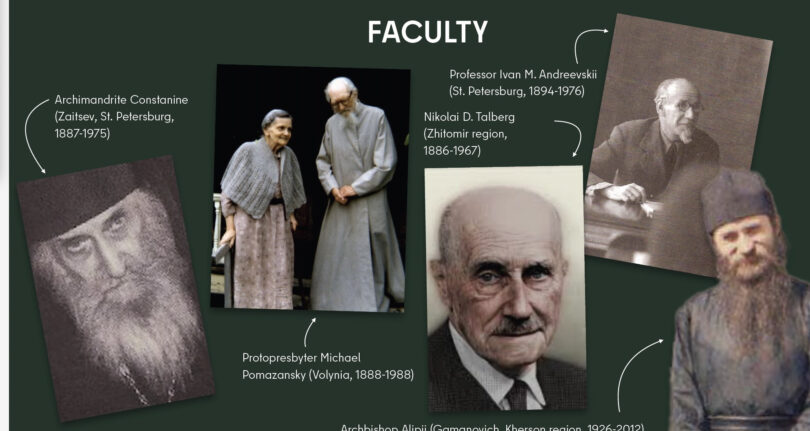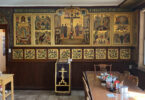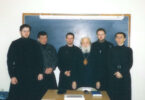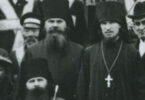Today Holy Trinity Orthodox Seminary celebrates the feast of its heavenly patrons.
The Orthodox presence in North America is connected with Russia’s colonization of Alaska, which began in 1741. There was no Orthodox presence in the continental states for a long time. The situation changed at the end of the 19th century when masses of Greek Catholics from the former Austro-Hungarian Empire converted to Russian Orthodoxy.
And this is the time when the 40-year-old Bishop Tikhon (Bellavin) arrived in America. A seminary was established in Minneapolis. St. Tikhon’s Monastery was founded in 1905; it is where the founder of Holy Trinity Monastery, Fr. Panteleimon, initially became a monk.
With the 1917 Revolution in Russia, the flow of money from Saint Petersburg ceased, and with it, the idea that Orthodox people of different backgrounds could be united under the auspices of the Russian Church also evaporated.
The key question for the entire history of the Russian Church in the twentieth century is: to maintain centralization or not?
Canonically, the status of the Russian refugee bishops caring for refugee flocks around the world was unprecedented. At first, all the bishops of the Russian Church, except those who were in newly formed states such as Poland and Finland, entered the ROCOR.
Metropolitan Platon (Rozhdestvensky) managed to stop the chaos in North America: parishes had begun to borrow money from banks, mortgaging the church buildings. One price for this stabilization was a break with the ROCOR and Moscow and support for autocephalist sentiments in the USA.
Metropolitan Platon’s vicar, Archbishop Apolinarii (Koshevoi), consecrated in Kiev in 1917, remained in communion with the ROCOR Council of Bishops. After the death of Metropolitan Platon in 1932, the North American Metropolia under his successor, Metropolitan Theophilus (Pashkovsky), entered the Russian Church Abroad as a self-governing metropolitan district.
Before the 1930s, there were two attempts to create seminaries, neither of which were successful. In 1938, the Russian diaspora celebrated the 950th anniversary of the baptism of Rusʹ – hence St. Vladimir Seminary in New York and the St. Vladimir Memorial Church in Jackson, NJ.
During the war, almost the entire ROCOR was on Axis territory or that of their allies – except for the USA, Canada, Australia, Switzerland, and England. In 1943, at the Vienna Conference of the ROCOR, the bishops refused to recognize Metropolitan Sergii, who had been elected Patriarch in the USSR, as canonical. The Bishops in the USA recognized him. Therefore, commemoration in the churches followed this order: Patriarch Sergius, Metropolitan Anastassy, and Metropolitan Theophilus. Accordingly, Patriarch Alexei I was recognized.
In America, hopes for autonomy from the Russian Orthodox Church were not compatible with subordination to the Russian Orthodox Church Abroad. In 1946, at the Seventh All-American (Cleveland) Sobor, a rupture occurred. The ROCOR restored its dioceses and a need emerged for a seminary of its own.
Jordanville was the largest Russian monastery after World War II, larger than New Valaam in Finland or Panteleimon Monastery on Mount Athos (before it was repopulated with monks from the USSR in the ’60s).
If there had been no Cleveland Sobor, Jordanville Seminary might have remained merely a school for novices who were prevented from graduating by the war…











